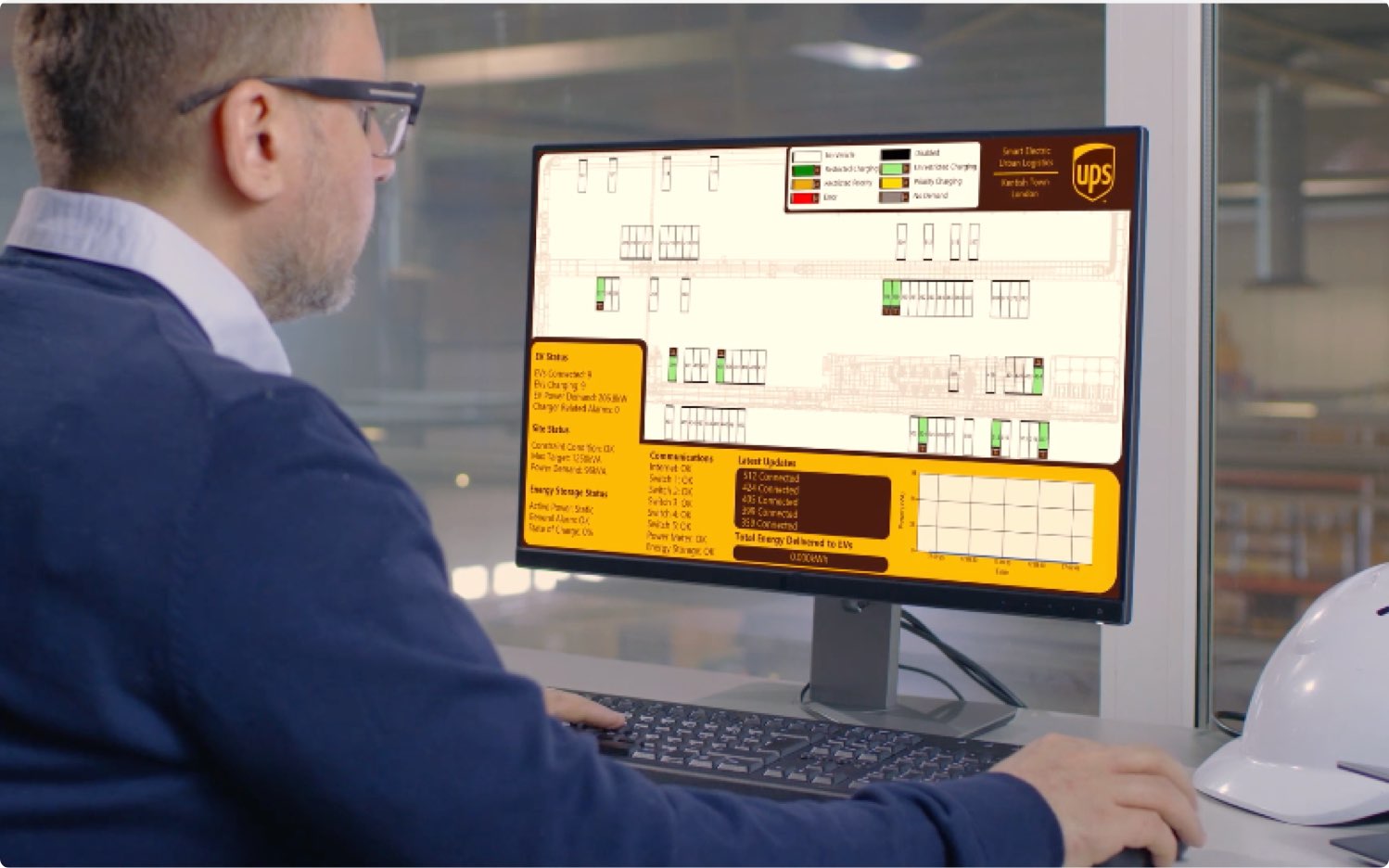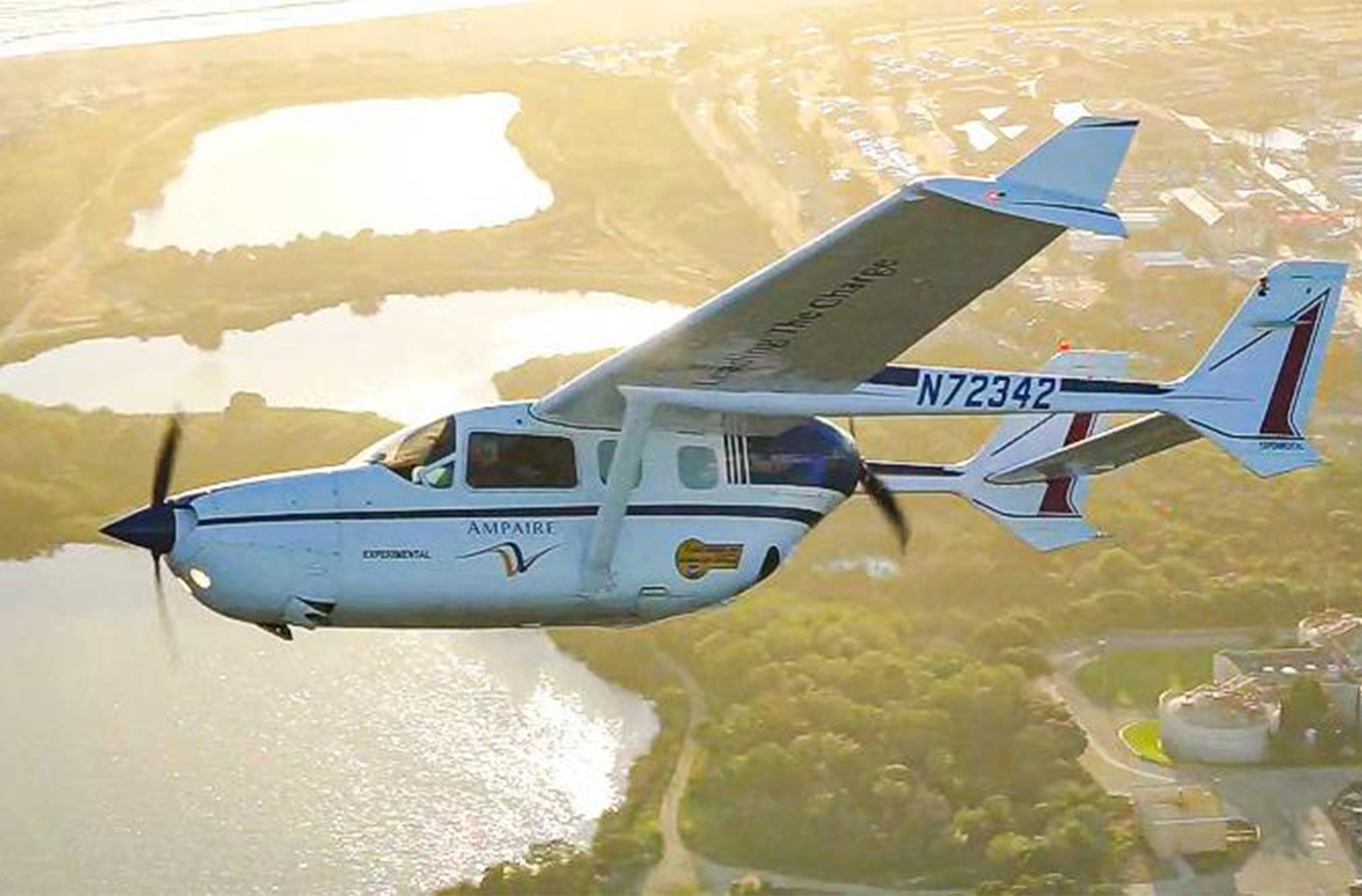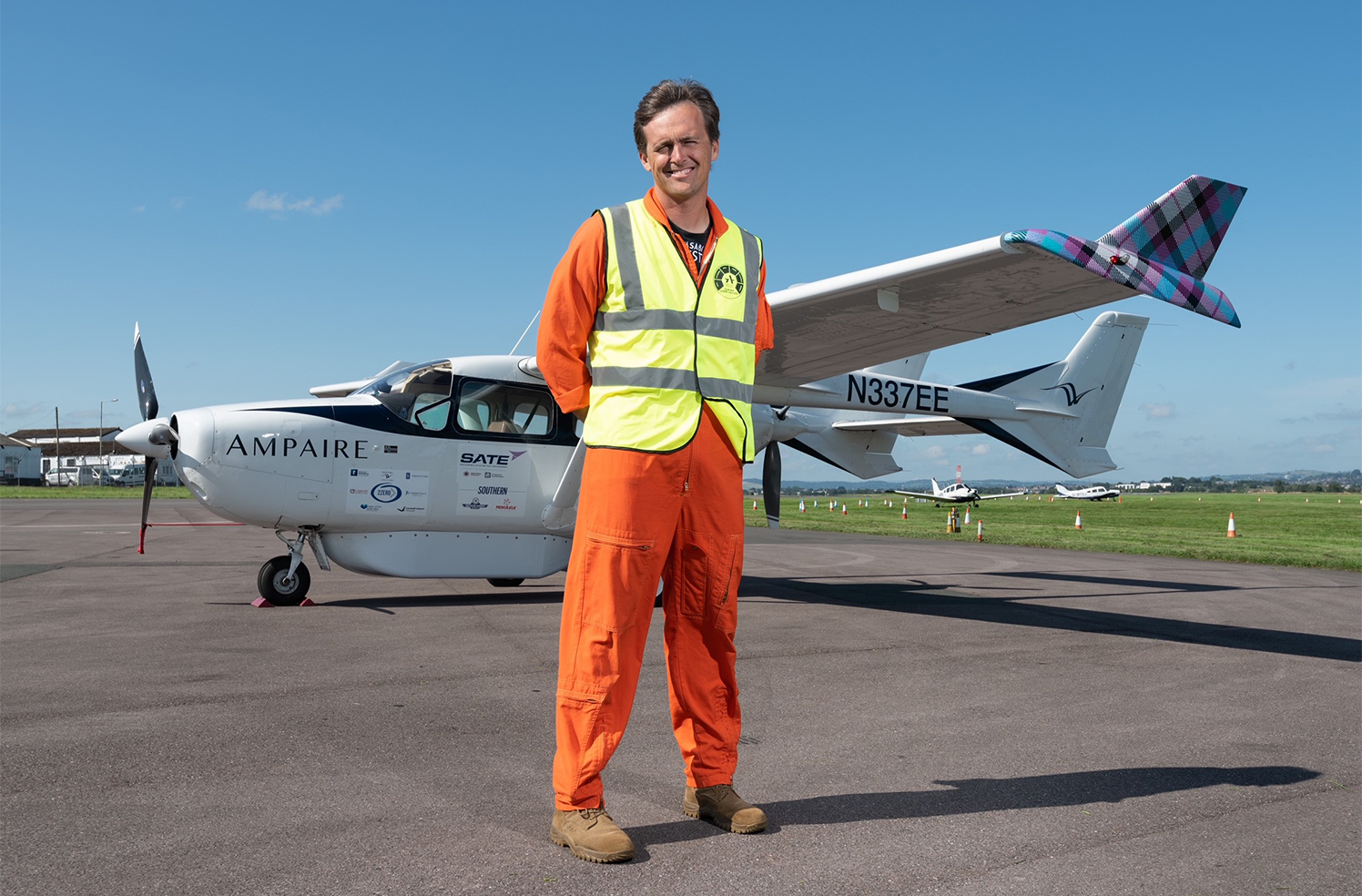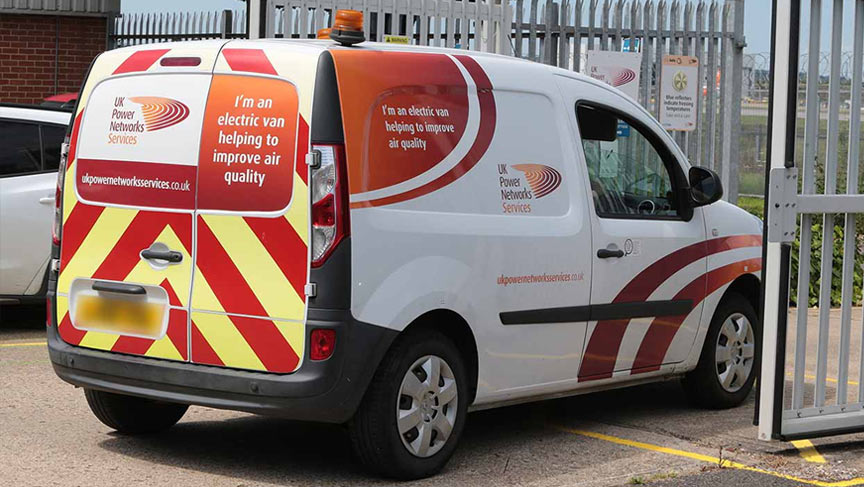Innovation
Inspired thinking to deliver a better future
Innovation
Inspired thinking to deliver a better future
We pursue technologically innovative solutions to energy challenges that deliver the best outcome possible for our clients. Our Energy Technology Consulting team work closely with our clients, industry partners, suppliers and the UK Government to develop and trial innovative energy solutions.
Smart Electric Urban Logistics with UPS
We implemented a smart new electric vehicle charging systems to power UPS’s central London delivery fleet for what is believed to be the first time in the world on this scale.
Freight electric vehicles, like those used by UPS, can use up to ten times as much power as a typical home when charging. This means that charging large numbers of trucks simultaneously puts significant demand on the depot’s electricity supply.
This project has enabled UPS to increase the number of 7.5-tonne electric trucks operating from its London site from 65 to all 170, without the need for the usual expensive upgrade to the power supply connection.

Our smart charging solution combines an Active Network Management system with battery storage, ensuring the depot’s electricity demand will not exceed the network’s limit and prevent significant investment in network electrical infrastructure.
We deployed the project in partnership with UPS, UK Power Networks and Cross River Partnership, with funding from the UK’s Office for Low Emission Vehicles through a competition led by Innovate UK.
This project is an example of how businesses can integrate electric vehicles into their fleets by optimising their existing infrastructure.
Remote operation of Heathrow’s electricity network
We investigated the creation of remote offsite access for the control and monitoring of Heathrow Airport’s electricity distribution network. This met the airport’s high-level security requirements and allowed staff to control the electricity network when access to the airport was restricted.
Funding for the project was awarded by Innovate UK in response to Heathrow Airport’s need for COVID-19 social distancing measures, whilst ensuring power supplies remained safe and reliable.
Mixed reality technologies were assessed, including the use of geo-fencing, a cyber perimeter that ensured the network remained highly secure in the virtual world. Biometric scanning such as facial recognition was also tested to provide further checks of authentication and authorisation, in addition to conventional technologies.


The project assessed opportunities to enhance the airport’s SCADA system’s capacity to be operated remotely, such as from an office outside the airport environment or even from home. It also investigated the potential to roll out the technology to other airports across the UK and large infrastructure projects.
As well as enabling staff to control the electricity network remotely, minimising the risk of COVID-19 transmission in the workplace, additional benefits included the reduction of energy losses and costs, as sections of the network continued to be monitored and switched off remotely when required, and a reduced carbon footprint as airport staff didn’t need to travel to, and around the airport so often.
This project sets out a vision not only for airports, but for other critical operations such as food processing sites and water treatment plants, to safely maintain a secure and reliable electricity network during social distancing.
Wireless charging feasibility study
We worked with UPS, High Speed 1 and WMG to assess the feasibility of using wireless charging to support the use of electric vehicles in commercial fleets on London’s roads. Funded by the Office for Low Emission Vehicles in partnership with Innovate UK, the project investigated the feasibility of deploying wireless charging technology in three live locations across London and Tamworth to understand the impact on infrastructure and the commercial viability of wireless charging. The study also looked at how its future use could reduce costs, improve productivity and safety, and increase the uptake of electric vehicle fleets across the UK.


The assessment included the wireless charging of UPS delivery vans at their Tamworth depot while parcels are loaded, of electric taxis while waiting for passengers in the taxi rank outside St Pancras International railway station and of UK Power Networks’ electric vans.
Wireless charging could allow drivers to stay in their vehicles and create a safer, more secure vehicle with greater productivity and lower cost. With so many potential benefits, commercial enterprises need to understand the case for wireless charging better. Giving fleet operators more choice in charging infrastructure could enable more investment in electric vehicles and achieve a zero emissions transport system in London by 2050.

EV Fleet-Centred Local Energy Systems (EFLES)
The EV Fleet-Centred Local Energy Systems (EFLES) aimed at optimising logistics companies’ growing EV fleets to demonstrate how smart charging can incentivise large fleet operators to go electric; cutting carbon emissions, air pollution and energy costs.
Working alongside Moixa, the smart charging specialist, global logistics company UPS, Cross River Partnership (CRP), a not-for-profit driving positive change for London, and Innovate UK to deliver the project. The project showed how Moixa’s GridShare artificial intelligence (AI) software can break down the barriers to electrification for global fleet operators by maximising the cost and carbon savings from EVs.
The project built on the Smart Electric Urban Logistics trial from 2017-19, which saw CRP, UPS and UK Power Networks develop new charging technology at the Camden depot, to overcome the challenge of charging an EV fleet without a costly upgrade of the local power network.

Supporting electric aviation
Ampaire is a technology company that is developing, and flying, hybrid-electric aircraft to propel the aviation industry to an all-electric future. The company delivered a successful demonstration of its hybrid electric Electric EEL aircraft, flying 85 miles between Exeter Airport and Cornwall Newquay Airport. The EEL, a modified six-seat Cessna 337 Skymaster, features a battery-powered electric motor at the front and a conventional combustion engine at the rear, enabling a reduction in emissions and operating costs by as much as 30%.
The aircraft flew on a combination of battery and piston power, collecting valuable data to monitor fuel savings, efficiency and noise. The demonstration was made possible thanks to Innovate UK's Future Flight Challenge that has provided funding to 2ZERO (Towards Zero Emissions in Regional Aircraft Operations), a consortium, of which UK Power Networks Services is a subcontractor, created to explore regional electric aviation transport solutions.

We advised the consortium on the engineering standards and requirements for airport electrical infrastructure and helped to identify an optimal charging solution. We also helped assess the opportunities for a future scale-up and wider use of electric aircraft including the electrical infrastructure requirements, approach to building the local energy system, and approaches for maximising the energy from renewable sources.
We also considered a number of specific electric charging innovations to identify a best-fit solution including:
- charging the plane using electricity from the airport’s own private wire network
- charging via a battery trailer - a mobile charger solution charges the aircraft at the apron.
- Swapping the plane's batteries - a battery swap will allow the depleted battery from the aircraft to be physically replaced with a fully charged battery.
CONTACT US




